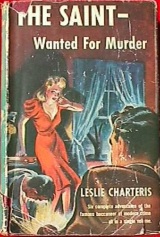Gasser
I’ve never really been sold on Doris Day as an actress; however my vocabulary on the subject is limited. I would not say that It’s a Great Feeling –her third film– really showed her in the best light, but the flick itself is somewhat intriguing. Self reflexive pictures are not much of a rarity, with many titles from the thirties and forties showing us the backstage drama of theater and movie production. This movie, however, takes it to a new level.
With the exception of some side characters and the producer role, Day is the only character who does not play herself. It’s a Great Feeling depicts the efforts of two actors —Jack Carson and Dennis Morgan— to convince the producer of their picture to hire an unknown actress/singer looking for a break. Besides screen tests, the story involves no actual filming of their feature, “Mademoiselle Fifi”. Instead, the duo try to have producer Arthur Trent (Bill Goodwin) discover Day’s character on his own by planting her as an elevator operator, cabbie, optometrist’s assistant, etc. Each time she comes into contact with the man, however, she flutters her eyes, quivers her smiling lips and emits a bizarre squeaking sound. Trent gradually loses his mind as he cannot understand why he keeps seeing the same woman everywhere he glances and fails to pick her up as a potential actress. Meanwhile Carson and Morgan are unsuccessfully vying for the protagonist’s affections.
The story is a bit scatter-brained as the trio endeavor to force discovery of the young unknown onto their producer, instead of just offering her up themselves (Carson is directing the picture). The songs are pretty good, made better by Day’s lovely singing voice, but the best entertainment the flick offers is in its cameos. Not only does the film’s director David Butler show up to decline directing “Mademoiselle Fifi,” but so do King Vidor, Michael Curtiz and Raoul Walsh. Because the film is set primarily on the Warner Bros. lot, we are entreated to a variety of the studio’s stars at the time: Ronald Reagan, Gary Cooper, Jane Wyman and the prettiest and youngest Patricia Neal I have ever seen, and the list goes on. I particularly enjoyed Joan Crawford‘s spot during which she starts an uproar that concludes with her slapping both Carson and Morgan. In response to “what was that all about,” she says “I do that in all my pictures.”
Filed under: Comedy, Musical, Romance | Tagged: Bill Goodwin, David Butler, Dennis Morgan, Doris Day, Gary Cooper, Gasser, Jack Carson, Jane Wyman, Joan Crawford, King Vidor, Michael Curtiz, Patricia Neal, Raoul Walsh, Ronald Reagan |













Leave a comment